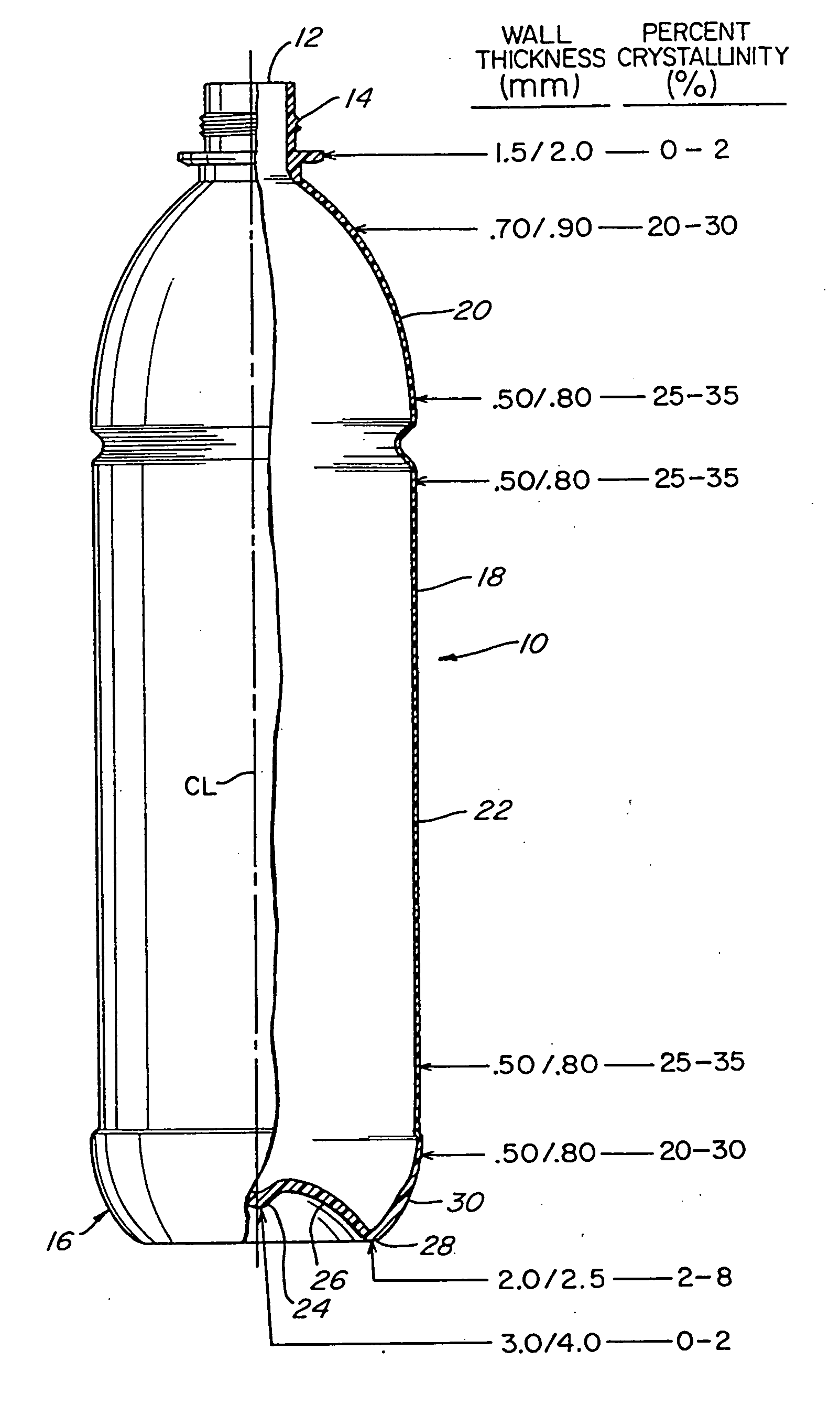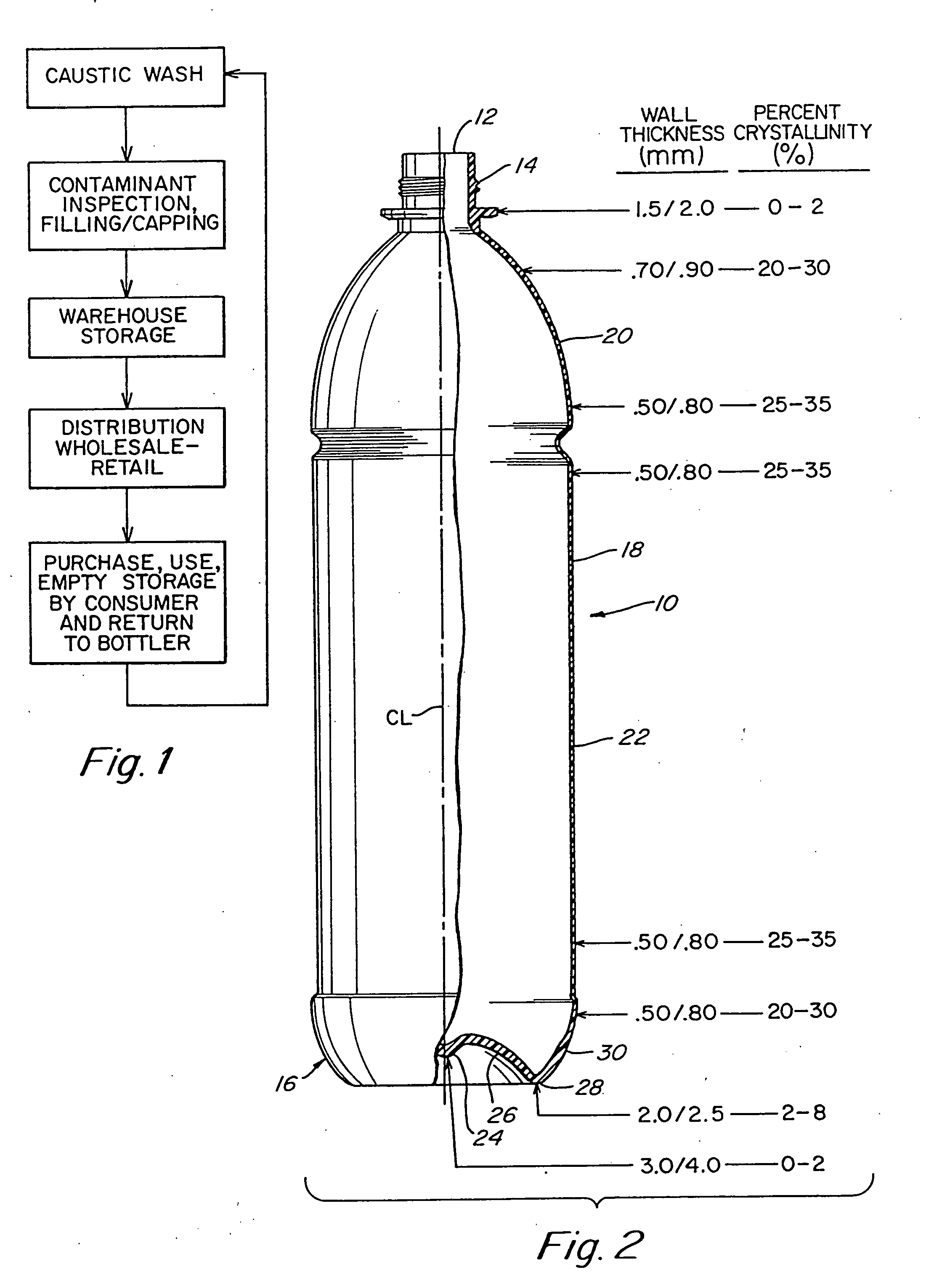Method of forming container with high-crystallinity sidewall and low-crystallinity base
a container and low crystallinity technology, applied in the field of container forming, can solve the problems of undesirable preform haze, waste of resources, and waste of resources, and achieve the effects of improving the resistance to caustic stress cracking, low crystallinity of the base, and improving the level of sidewall crystallinity
- Summary
- Abstract
- Description
- Claims
- Application Information
AI Technical Summary
Benefits of technology
Problems solved by technology
Method used
Image
Examples
Embodiment Construction
[0034] Referring now to the drawings, and in particular FIG. 1, a commercial refillable container must withstand numerous refill cycles while maintaining its aesthetic and functional features. A test procedure for simulating such a cycle would be as follows. As used in the specification and claims, the ability to withstand a designated number of refill cycles without crack failure and / or with a maximum volume change is determined according to the following test procedure.
[0035] Each container is subjected to a typical commercial caustic wash solution prepared with 3.5% sodium hydroxide by weight and tap water. The wash solution is maintained at the designated wash temperature, i.e., 60° C. or more, in accordance with this invention. The bottles are submerged uncapped in the wash for 15 minutes to simulate the time / temperature conditions of a commercial bottle wash system. After removal from the wash solution, the bottles are rinsed in tap water and then filled with a carbonated wat...
PUM
| Property | Measurement | Unit |
|---|---|---|
| filling pressure | aaaaa | aaaaa |
| filling temperature | aaaaa | aaaaa |
| filling pressures | aaaaa | aaaaa |
Abstract
Description
Claims
Application Information
 Login to View More
Login to View More - R&D
- Intellectual Property
- Life Sciences
- Materials
- Tech Scout
- Unparalleled Data Quality
- Higher Quality Content
- 60% Fewer Hallucinations
Browse by: Latest US Patents, China's latest patents, Technical Efficacy Thesaurus, Application Domain, Technology Topic, Popular Technical Reports.
© 2025 PatSnap. All rights reserved.Legal|Privacy policy|Modern Slavery Act Transparency Statement|Sitemap|About US| Contact US: help@patsnap.com



